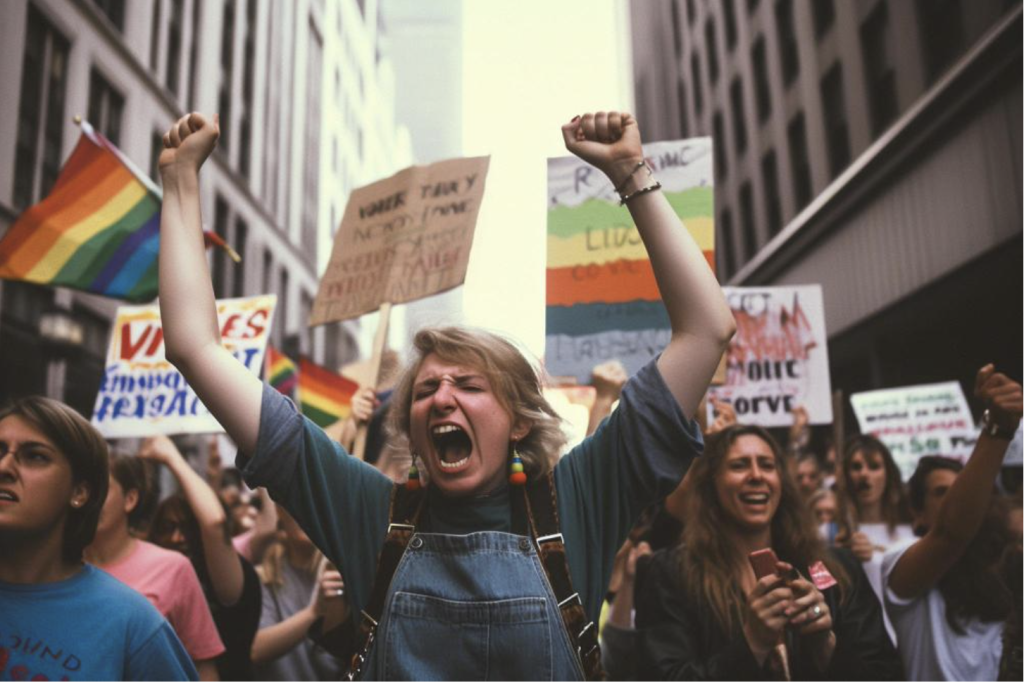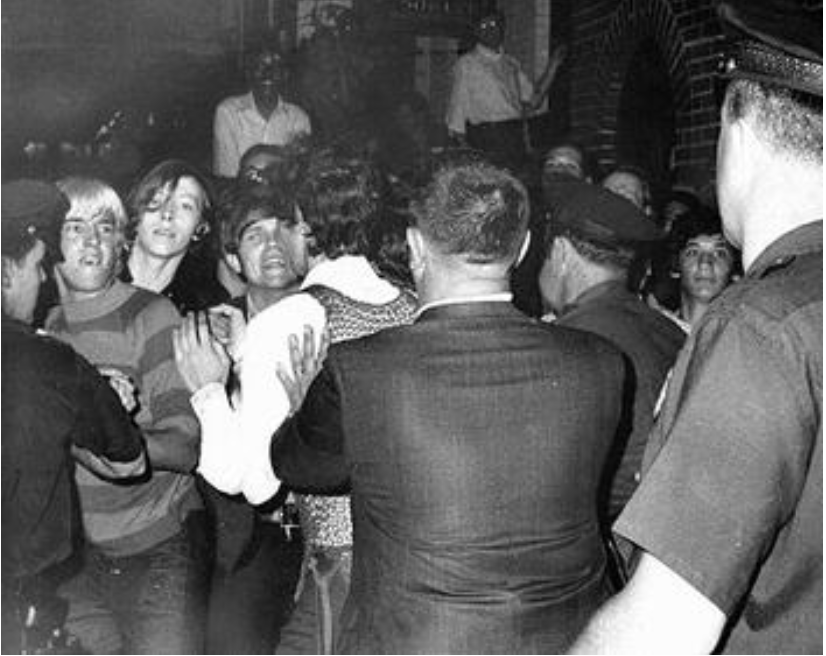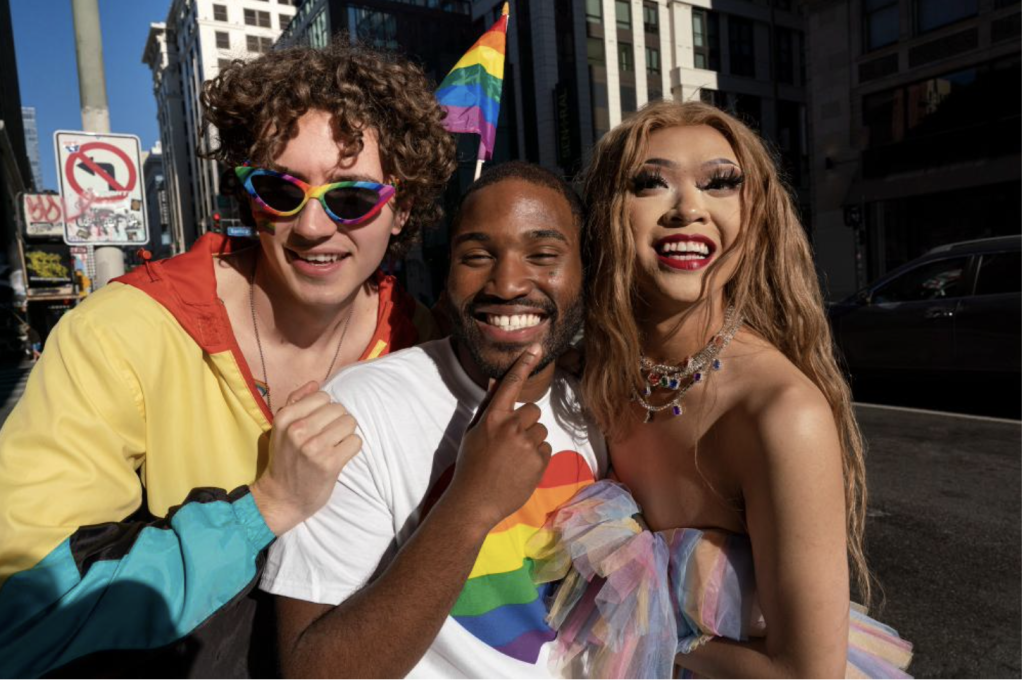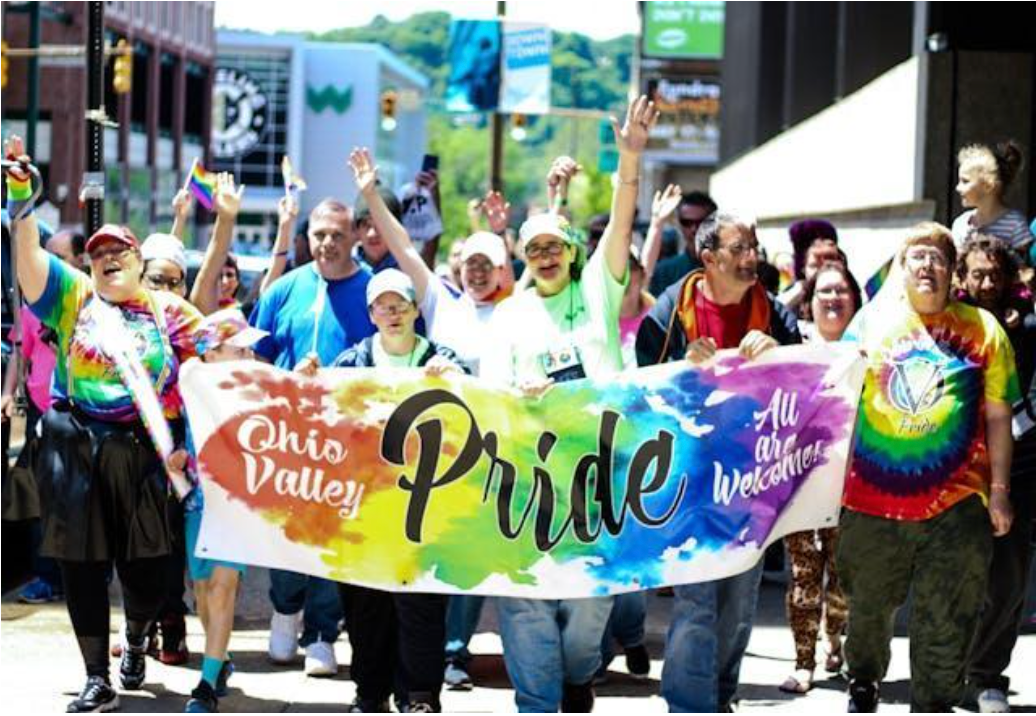
The Power of Pride, every year, millions worldwide celebrate pride, a symbol of resilience, strength, and unity for the LGBTQ+ community. But pride is more than just a party – it’s a testament to the power of activism and community organizing. These vibrant events serve as platforms for self-expression and visibility and underscore the enduring spirit of the LGBTQ+ movement that has propelled it forward.
Pride celebrations have become a powerful catalyst for change, fostering acceptance and challenging societal norms, from the defiant beginnings at the Stonewall Inn to the colourful
parades that now grace the streets of cities worldwide. In this comprehensive article, we’ll delve into the rich history of pride, explore the movement’s evolution, and shed light on the ongoing struggles and triumphs of LGBTQ+ activism and community organizing.
The Origins of Pride.

The genesis of the Pride movement can be traced back to the Stonewall Riots of 1969, a pivotal moment that ignited a fierce resistance against police harassment and societal oppression. On a warm summer night in New York City, the patrons of the Stonewall Inn, a historic LGBTQ+ gathering place, had finally reached their breaking point. In the face of yet another discriminatory raid, they fought back, sparking a series of demonstrations that would forever change the course of the LGBTQ+ rights movement.
Early pioneers and activists like Marsha P. Johnson, Sylvia Rivera, and Harvey Milk were at the forefront of this resistance, risking their safety and well-being to demand visibility and equality. Their bravery and unwavering determination laid the foundation for the very first Pride march, which took place on June 28, 1970, commemorating the first anniversary of the Stonewall Uprising.
As the years passed, these courageous individuals paved the way for future generations, inspiring others to take up the mantle of activism and community organizing. Their sacrifices and tireless efforts ensured that the Pride celebrations we cherish today would be powerful reminders of the battles fought and the victories achieved.
Evolution of Pride Celebrations.

From those defiant beginnings, Pride celebrations have evolved into a kaleidoscope of vibrant parades, festivals, and events that embrace diversity and amplify the voices of the LGBTQ+ community across the globe. What began as protests against injustice has blossomed into a global phenomenon, uniting individuals from all walks of life in a shared pursuit of acceptance and celebration.
As the movement gained momentum, Pride celebrations transformed remarkably, transitioning from mere protests to extravagant displays of pride, joy, and solidarity. Colourful floats, pulsating music, and a sea of rainbow flags have become iconic symbols of these events, drawing in crowds of supporters and allies who stand in solidarity with the LGBTQ+ community.
Moreover, as the movement has grown, so has inclusivity within its ranks. Pride celebrations now encompass a broad spectrum of identities, ensuring that the experiences and struggles of individuals across the LGBTQ+ spectrum are recognized and uplifted. From the inclusion of transgender and non-binary individuals to the celebration of diverse sexualities and gender expressions, pride has become a true reflection of the beautiful tapestry that makes up the LGBTQ+ community.
The Importance of Community Organizing.
At the heart of pride lies the power of community organizing – a force that has been instrumental in driving change and fostering a sense of belonging and support within the LGBTQ+ community. Through collective action and grassroots efforts, individuals have built robust support networks, created safe spaces, and amplified their voices to advocate for their rights.
Community organizing has played a crucial role in mobilizing the LGBTQ+ community to take action, whether through lobbying for legislative changes, organizing protests, or raising awareness about pressing issues. These efforts have shaped public discourse, influenced policymakers, and pushed for legal protections and equal rights.
One of the most significant victories of community organizing within the LGBTQ+ movement was the legalization of same-sex marriage in numerous countries around the world. This monumental achievement resulted from years of tireless advocacy, grassroots mobilization, and unwavering determination by LGBTQ+ activists and allies alike.
Beyond legal battles, community organizing has also focused on creating safe spaces and support systems for LGBTQ+ individuals. From establishing LGBTQ+ community centres and support groups to fostering inclusive workplaces and educational environments, these efforts have provided a vital lifeline for those seeking acceptance, resources, and a sense of belonging.
Intersectionality in the LGBTQ+ Movement.
As the LGBTQ+ movement has evolved, it has increasingly recognized the importance of intersectionality – the understanding that individuals within the community face multifaceted challenges stemming from the intersections of race, gender, class, and ability. By amplifying diverse voices and experiences, the movement has sought to create a more inclusive and representative space for all.
Addressing these intersections has been crucial in ensuring that the LGBTQ+ movement embraces the rich tapestry of identities that make up the community. From tackling racial disparities and advocating for the rights of transgender individuals to addressing the unique challenges faced by those with disabilities, the movement has made strides in embracing the complexities of lived experiences.
One of the most potent examples of intersectional activism within the LGBTQ+ community has been the work of organizations like the Audre Lorde Project, which focuses on uplifting LGBTQ+ people of colour and addressing racial justice, economic justice, and community wellness issues. Such initiatives have played a vital role in fostering a more inclusive and equitable movement by centring the voices and experiences of those at the intersection of multiple marginalized identities.
Contemporary Issues and Challenges.
Despite the remarkable progress achieved by the LGBTQ+ movement, the community faces numerous challenges in the contemporary landscape. Legal battles and discriminatory policies persist, with some regions still criminalizing same-sex relationships or denying fundamental rights to LGBTQ+ individuals.
In many parts of the world, LGBTQ+ individuals still face discrimination in employment, housing, and access to essential services. Such injustices not only violate fundamental human rights but also contribute to the marginalization and stigmatization of the LGBTQ+ community, perpetuating cycles of oppression and inequality.
Representation and visibility in media and politics also remain crucial battlegrounds, as the portrayal and inclusion of LGBTQ+ narratives play a significant role in shaping societal perceptions and fostering understanding. While progress has been made in recent years, with more LGBTQ+ characters and storylines being featured in popular media, there is still a long way to go in achieving authentic and nuanced representation that reflects the community’s diversity.
Furthermore, access to comprehensive healthcare and mental health support services remains an ongoing concern for the LGBTQ+ community. Many individuals face unique challenges and barriers to care, including discrimination, lack of culturally competent providers, and a shortage of resources tailored to their specific needs. Addressing these disparities is crucial for ensuring the overall well-being and thriving of LGBTQ+ individuals.
Global LGBTQ+ Activism.
The fight for LGBTQ+ rights is global, with international Pride events and organizations serving as beacons of hope and solidarity. From the iconic Pride celebrations in cities like New York, San Francisco, and London to the courageous marches held in countries where LGBTQ+ rights are severely restricted, the movement transcends borders and cultures.
In regions where same-sex relationships are still criminalized, and LGBTQ+ individuals face harsh persecution, activists have taken tremendous risks to organize Pride events and advocate for change. In the face of adversity, these acts of defiance are potent reminders that pursuing equality and acceptance knows no boundaries.
International organizations like OutRight Action International and the International Lesbian, Gay, Bisexual, Trans, and Intersex Association (I.L.G.A.) have played pivotal roles in supporting and amplifying the voices of LGBTQ+ activists worldwide. Through advocacy, education, and collaboration with local communities, these groups have worked tirelessly to promote LGBTQ+ rights and foster an environment of understanding and respect.
However, navigating cultural and religious differences has been a significant challenge for LGBTQ+ activists worldwide as they work to bridge gaps and foster acceptance within diverse communities. In some regions, deeply entrenched traditional values and societal norms have posed obstacles to progress, requiring activists to approach their efforts with sensitivity, patience, and a willingness to engage in open dialogue.
Despite these challenges, advocacy efforts have persisted, driven by the unwavering belief that human rights are universal and everyone deserves to live their truth without fear or persecution.
The Role of Allies and Allyship.
The unwavering support of allies has bolstered the LGBTQ+ movement – individuals who may not identify as LGBTQ+ but recognize the importance of solidarity with the community. Allies play a crucial role in amplifying voices, challenging discrimination, and creating inclusive spaces where everyone can feel safe and respected.
Being an effective ally requires more than passive support; it demands active engagement, education, and a willingness to listen and learn from the experiences of the LGBTQ+ community. Allies can leverage their privilege and platforms to advocate for change, challenge harmful stereotypes, and create a more equitable society.
One of the most impactful ways allies can contribute to the LGBTQ+ movement is by educating themselves on the issues faced by the community. This involves seeking out reliable sources, attending workshops and training sessions, and actively listening to the lived experiences of LGBTQ+ individuals. By gaining a deeper understanding of the challenges and barriers faced by the community, allies can become more effective advocates and better equipped to support inclusive policies and initiatives.
Additionally, allies can use their voices to amplify LGBTQ+ narratives and experiences, particularly in spaces where these voices may be underrepresented or marginalized. This can include challenging discriminatory language or behavior, speaking up against injustice, and creating platforms for LGBTQ+ individuals to share their stories and perspectives.
Furthermore, allies can demonstrate their support by actively participating in LGBTQ+ events and initiatives, such as Pride celebrations, fundraisers, and awareness campaigns. Their presence and involvement provide valuable visibility and send a powerful message of solidarity and acceptance.
Ultimately, being an ally is not passive; it requires ongoing commitment, self-reflection, and a willingness to confront one’s biases and privileges. By working in partnership with the LGBTQ+ community and amplifying their voices, allies can play a vital role in advancing the cause of equality and fostering a more inclusive and accepting society for all.
The Future of Pride and Activism.
As the LGBTQ+ movement continues to evolve, emerging trends and new frontiers are reshaping the landscape of Pride and activism. One such frontier is the increasing visibility and recognition of non-binary and gender-nonconforming individuals, who have long been marginalized within the broader LGBTQ+ community.
Organizations like the Non-Binary and GenderCelebration have advocated for the rights and representation of this often-overlooked group, challenging traditional binary notions of gender and pushing for greater inclusivity within the movement.
Another emerging trend is the growing recognition of intersex rights and the need to address the unique challenges faced by intersex individuals. Groups like the Intersex Society of North America and the International Intersex Human Rights Organization have been instrumental in raising awareness about the human rights violations and discrimination experienced by intersex individuals, advocating for bodily autonomy and informed consent.
As these new frontiers emerge, the next generation of LGBTQ+ activists and allies is already taking up the mantle, bringing fresh perspectives and innovative approaches to the fight for equality. Young activists have harnessed the power of social media and digital platforms to amplify their voices, build communities, and mobilize support for their causes.
Moreover, the intersection of LGBTQ+ rights and other social justice movements, such as those addressing racial inequality, climate change, and economic justice, has become increasingly apparent. LGBTQ+ activists recognize the importance of intersectionality and the need to address these interconnected issues holistically, fostering powerful coalitions and amplifying diverse voices.
By passing the torch to these dynamic voices and embracing intersectional approaches, the LGBTQ+ movement ensures its continued relevance and ability to adapt to the evolving challenges and complexities of the future.
Conclusion.
Pride celebrations are not merely festive occasions but powerful reminders of the hard-fought battles that paved the way for progress, acceptance, and visibility within the LGBTQ+ community. From the defiant uprising at the Stonewall Inn to the global phenomenon that pride has become, these events stand as a testament to the resilience, strength, and unwavering spirit of the LGBTQ+ movement.
As we continue to march forward, let us celebrate the achievements of the past while recognizing the work that still lies ahead. The fight for equality and acceptance is an ongoing journey that requires unwavering dedication, compassion, and a commitment to amplifying diverse voices and experiences.
To the LGBTQ+ community, allies, and all those who stand in solidarity, let this article serve as a rallying cry to continue the fight, foster understanding, and build a world where everyone can live authentically and proudly. Together, we can ensure that the power of pride resonates throughout generations, inspiring hope, fostering acceptance, and, ultimately, achieving true equality for all.
In the words of the iconic Harvey Milk, “Hope will never be silent.” Let us embrace these words and continue to raise our voices, tell our stories, and march together in solidarity until the echoes of pride reverberate across every corner of the globe. Equality becomes not just a dream but a reality.


